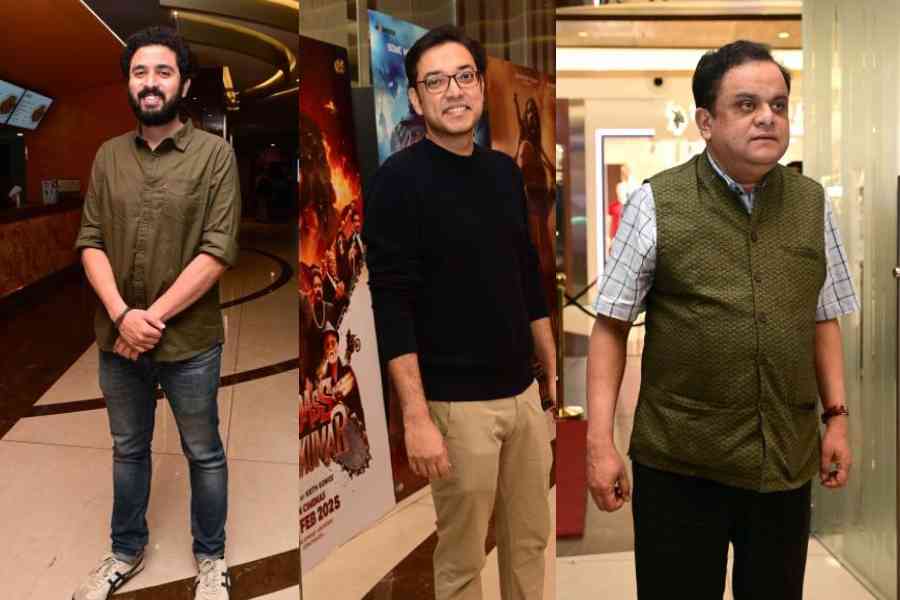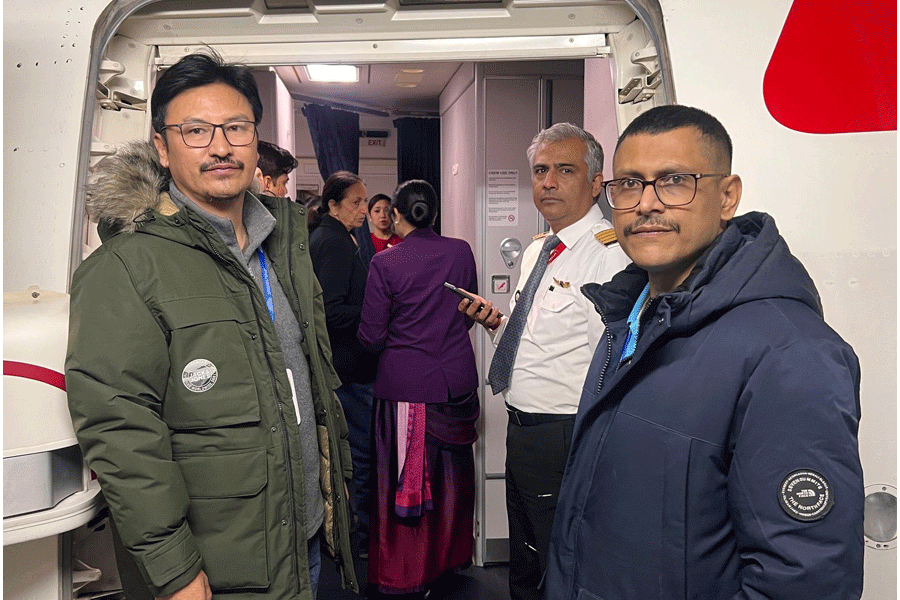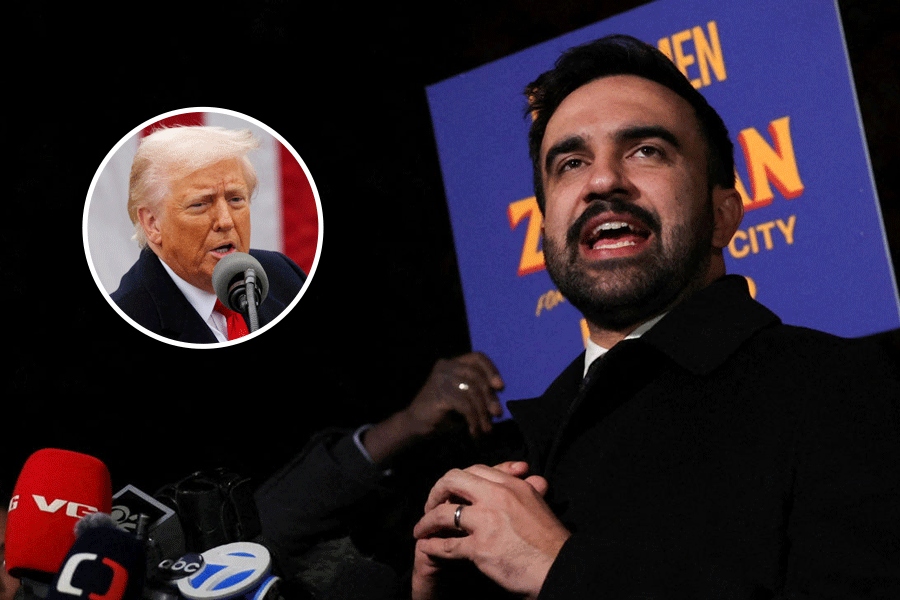Mayanagar — Once Upon a Time in Calcutta is a hauntingly evocative portrait of a city in flux, where the ghosts of its past linger amid the ruins of a vanishing world. Directed by Aditya Vikram Sengupta, the film first premiered at the 2021 Venice Film Festival and has now released in the theatres in Calcutta.
As the film premiered at PVR-INOX (South City) on Friday, the cast, including Sreelekha Mitra, Satrajit Sarkar, Bratya Basu and the director, were present. Other celebs in attendance included Anupam Roy, and Ishaa Saha among others.
Sreelekha Mitra leads an ensemble cast that includes Bratya Basu, Anirban Chakrabarti, Satrajit Sarkar, Arindam Ghosh, Reetika Nondine Shimu, and Shayak Roy, each contributing to Sengupta’s elegiac tapestry of urban decay and human longing.
Returning to the screen after nearly a year since Pariah, Sreelekha Mitra delivers a performance imbued with quiet resilience. As Ela, she embodies a woman caught between resignation and rebellion. She is a struggling actress who has chosen to leave her husband, Shishir (Satrajit Sarkar), in pursuit of dreams both grand and heartbreakingly simple. Bratya Basu, as her melancholic step-brother Tutu — desperately clinging to a crumbling family theatre — imbues his character with a sense of deep, almost tragic pathos.
Ela’s marriage has been left hollow by the loss of her only daughter, and her life is a fragile balancing act between aspiration and disillusionment. She hosts a low-budget astrology show on a local news channel, where her only real advantage is her unspoken infatuation with her boss (Anirban Chakrabarti). A rekindled romance from her youth flickers momentarily, yet ironically, the only man unwavering in his devotion to her remains her estranged husband.
Sengupta’s narrative expands beyond Ela’s intimate struggles, weaving a broader social fabric of Calcutta’s working and middle classes. The film unfolds against a backdrop of crumbling infrastructure, broken bridges, and a city seemingly adrift, haunted by the spectre of Rabindranath Tagore. His timeless songs, juxtaposed with Bollywood influences, form a melancholic score as the camera glides through the puddle-strewn alleys and neglected corners of North Calcutta.
From Ela’s way of ordering at a restaurant (Chung Wah) to a young couple struggling to love amidst the mundane cruelties of life, Sengupta does “subtle” the best. Themes of financial deception, marital discord, extramarital entanglements, and political corruption intersect in a way that leaves the audience breathless by the time the curtain falls.
Once Upon a Time in Calcutta is a poignant, deeply atmospheric exploration of a metropolis where personal grief and collective nostalgia merge into something profoundly cinematic. The only presence untouched by sorrow is Elsa, the stray dog, who is fed, cared for, and allowed the simple joys of companionship — an unassuming yet touching reflection of the everyday rhythms of Calcutta, where life, in its most unvarnished form, persists as the city’s human connections fray.










